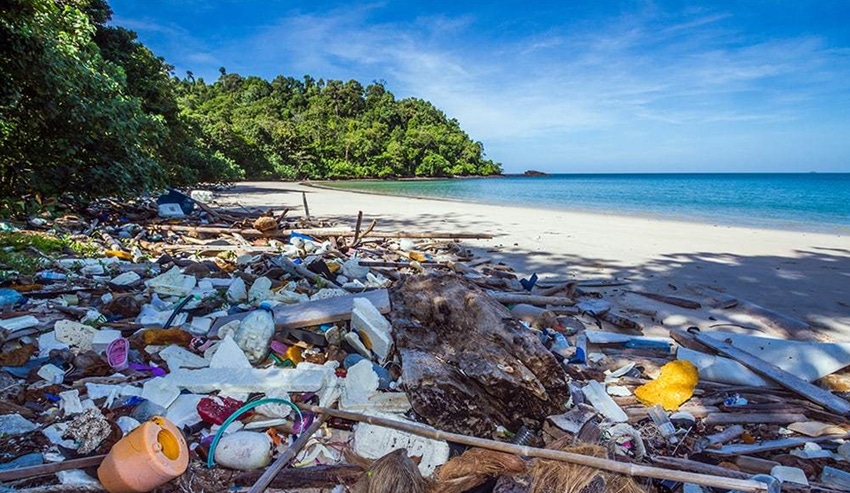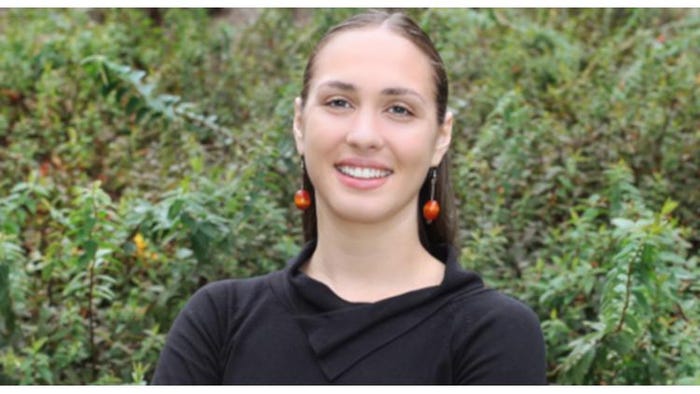A sea of voices: Trends and perspectives in marine plastic pollution
November 26, 2018

A key theme in this year’s conversations on sustainable packaging has been what to do about the (mostly) plastic packaging that ends up as marine litter. This year has seen a deluge of responses to the public outcry around this very visible and emotionally provocative issue.
Governments have responded with various regulations, and companies have responded with commitments to improve recycling rates and markets, as well as initiatives to invest in recycling technology and infrastructure. As a society, we are just now starting on the path to figuring out which solutions are most appropriate in which contexts.
The problem is marine litter, not plastics. Many in the packaging industry and sustainability space believe that demonizing plastics in packaging and other applications is an emotional reaction to plastic pollution, and that the problem really should be framed as marine litter, not plastics overall. Indeed, plastics are a versatile material with unique properties that sometimes do not have any viable substitutes. Problems emerge when they are mismanaged at end-of-life since they take a long time to break down in the environment. But not all plastics are mismanaged in all places. In Norway for example, polyethylene terephthalate (PET) bottles have a 97% recycling rate.
It is possible for plastics to be managed at their end of life through a variety of methods. While we cannot all be Norway, there are successful examples of countries managing some plastics. Research shows that the biggest contributors to marine plastic pollution are land-based sources in emerging economies, namely Asia and Africa, which lack adequate infrastructure to manage these materials. Clearly these regions represent critical places for intervention.
Terminology around bio-based and biodegradable materials is confusing and potentially harmful in the marine plastics debate. Industry experts recognize there is a lot of confusion around these terms and how they relate to end-of-life management for plastics.
When talking about marine litter, oftentimes there are references to bio-based packaging, which actually has no impact on marine litter, since bio-based packaging refers to sourcing considerations for plastics and not their end-of-life. So when bio-based plastics are posed as a “solution” to plastic pollution, this is distracting from the end-of-life conversation. While some bio-based plastics are compostable, some are not, and these should be understood as separate concepts.
It is also common to hear about “biodegradable” packaging, which, while it sounds attractive to the general public, adds to the confusion on this topic. To impact marine litter, products must be biodegradable in certain conditions in the marine environment over a certain period of time. There is no marine degradability standard applicable to all conditions in which plastic would end up in marine environments. ASTM came out with standard D6691 that tests biodegradation of plastics under certain conditions, but recognizes there is significant variability in the nature of exposure of plastics in marine environments. Society at large should tread carefully on these claims and avoid popularizing the idea of “litter friendly” packaging.
Broad strategies are being discussed to address end-of-life management for plastics. Bans on certain single-use plastics have been prominent this year around the world. For example, we saw Chile and Burundi ban plastic bags, India promise to ban single-use plastics by 2022, Dominica to ban single-use plastics and expanded polystyrene by 2019 and, just this month (November 2018), the European Union (EU) promised to ban single-use cutlery, cotton swabs, straws and stirrers by 2021, as well as products made of oxo-degradable plastics and fast-food containers made of expanded polystyrene.
These bans have focused on some of the most common ocean-polluting plastics. However, many in industry believe we should not expect to ban our way to the circular economy. Broader strategies are needed that reflect material and regional differences, as well as opportunities in plastics packaging.
The proposed EU plastics policy provides for other strategies, such as national plans to encourage reuse, minimum required recycled content, separate collection systems for specific products like PET bottles, variable fees to reflect broader package sustainability criteria and labeling for how to dispose of certain products. An explosion of voluntary commitments—like the New Plastics Economy Global Commitment, a U.K. and Chilean Plastics Pact, G7 Ocean Plastics Charter, Commitments from Plastics Europe, the Canadian Plastics Industry Assn. and the American Chemistry Council (ACC) Plastics division—commit to increasing recyclability, reusability and use of recycled content. There is also an ever growing list of individual corporate commitments, including the first commitments by suppliers like Amcor and Klöckner Pentaplast. Emphasis is being placed on a diversity of solutions and from many different players.
Many perceive recycling as the solution, but fixing recycling is not enough. In ideal economic circumstances, market forces would keep all plastics from going into the ocean and direct them towards recycling and then onto a second life. However, this is obviously not how things play out in the real world. Even in Europe, considered to be a leader in recycling, plastic packaging recycling across plastics types is still only around 40% according to Plastics Europe, which is robust compared to the U.S.’s 14.6% recycling rate for plastic packaging.
Although not a lot of plastics today are getting effectively recycled, the recent 2018 Sustainable Packaging Study conducted by Packaging Digest and the SPC revealed that many still perceive recycling as the answer to plastic pollution. So, if recycling is the answer, why aren’t we doing more of it?
Recycling is not a perfect market since the value of some kinds of plastic packaging is lower than the cost to recover it. In addition, the actual process of mechanical recycling itself cannot adequately manage the diversity of plastic packaging materials on the market since some materials and formats are not widely recyclable today. While chemical recycling offers tremendous promise, there is a long way to go before this technology is scaled across packaging types. While low recycling rates for plastics are certainly part of the problem, conversations in industry are starting to acknowledge that fixing recycling is not the whole solution. We will not recycle our way out of this.
We need innovation and investment to help develop the system of the future. Many conversations are happening on the ground in communities about the good old days when recycling was just corrugated packaging and metal cans. While some unnecessary complexity can be addressed through market and policy incentives,we can’t go back in time. The world is moving towards more lightweight, flexible packaging.
At the same time, the recycling market has shown itself to be in need of investments and corrective measures to direct material efficiently. Innovators like Renewlogy, DEMETO and Loop Industries are working to scale innovations in chemical recycling and the SPC’s FlexPack Recovery Challenge seeks to find others. Investment firms like Circulate Capital are providing the critical capital needed to invest in end-of-life infrastructure where it is most needed globally.
The plastics pollution debate will undoubtedly continue to unfold and drive an evolving conversation in the coming years, especially as new data is emerging on microplastics found in everything from drinking water to beer to air, which may move the conversation beyond packaging to textiles and other topics.
Many conversations and actions have taken place this year to build a roadmap to effective solutions. It is clear there is no silver bullet, but rather many solutions are required, and these might all look different in different places.

Tristanne Davis joined GreenBlue in November 2017 as a project manager with the Sustainable Packaging Coalition (SPC). Her primary work involves helping to shape and deliver on its Industry Leadership Committee initiatives, ASTRX project and Forest Products work. Davis received her BA in economics from Skidmore College followed by several years of environmental consulting for a variety of clients across business and government, and a stint in Nicaragua managing an agroforestry program with a local non-governmental organization (NGO). She recently finished a Master’s program in industrial ecology at the Yale School of Forestry and Environmental Studies, and an MBA program at IE Business School in Spain.
********************************************************************************
In addition to leading suppliers showing the latest solutions in labeling, automation, food packaging, package design and more—WestPack 2019 (Feb. 5-7; Anaheim, CA) gives you access to the industry's leading educational offerings with the 3D Printing and Smart Manufacturing Innovations Summits, the MD&M Medtech Conference and free industry education at the Expo. Register to attend today!
About the Author(s)
You May Also Like


